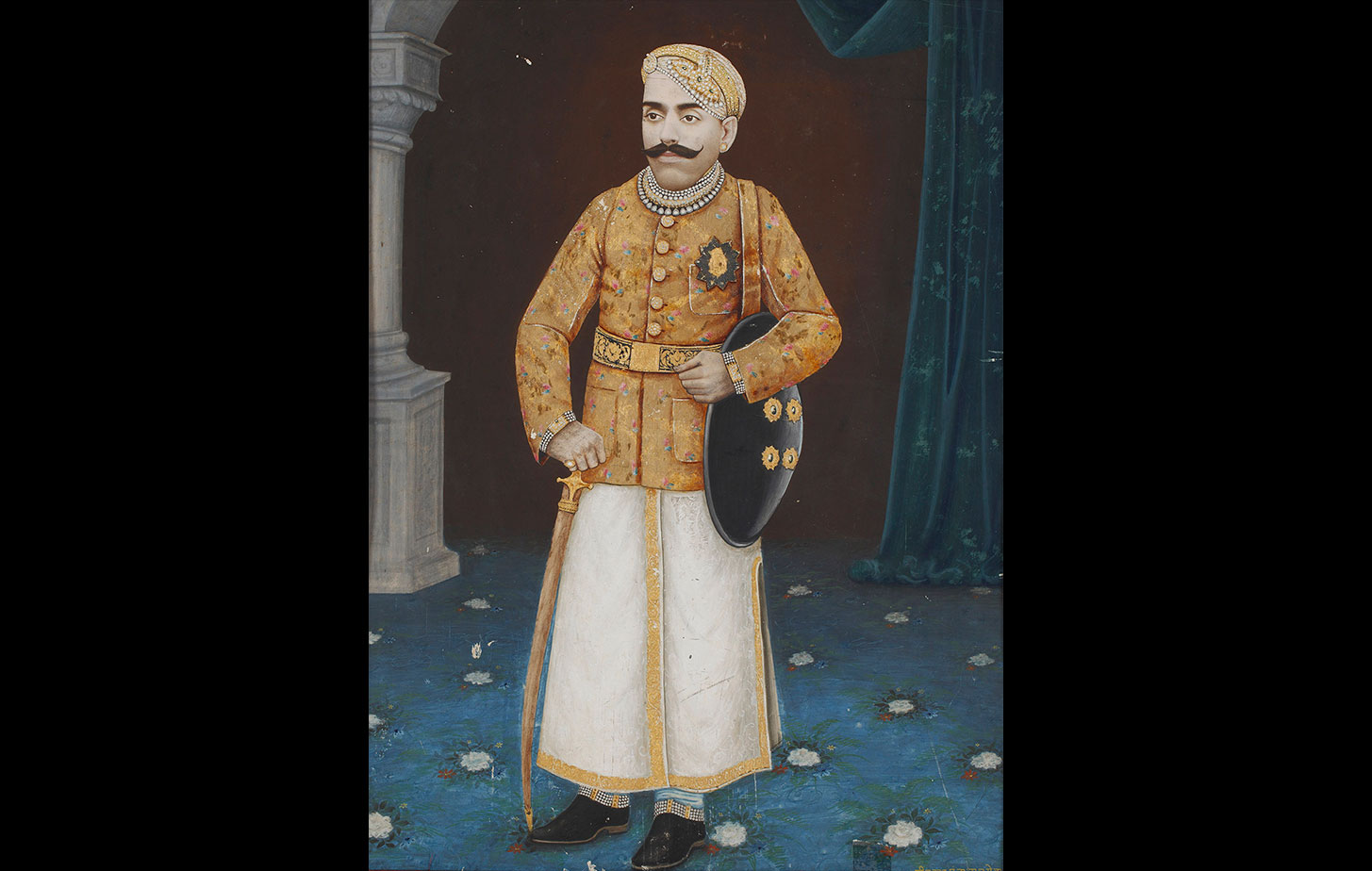
In the West, hand-painting was only used to add delicate highlights or make modest adjustments to images. But the method took a special and distinctively vivid turn in India. Indian royals were first enamoured with photography, but they quickly began to believe that there was something lacking in the images. Something of the grandeur and magnificence of their robes, jewels and palaces were getting lost in translation. This was when a merger of two distinct art-forms occurred, and court painters were employed to apply colour over photographs. The new arrangement gave Indian princes the best of both worlds: a quick and honest recreation of their likeness, plus a highly embellished final product, worthy of the skills of a miniaturist.
This photograph of Maharana Bhupal Singh (1884-1955) of Udaipur could be considered as a fine example of just how much reality could be bent in service of the royal narrative. Bhupal Singh ascended the throne in 1930 at the age of 46 when India was in the throes of the Civil Disobedience movement. Maharaja Bhupal Singh was paralysed from the waist down due to tuberculosis which was followed by other serious ailments at the age of sixteen, and the condition left him confined to a wheelchair for the remainder of his life. This photograph, was painted over, leaving only his face visible. The artist has vividly brought out the details of the maharaja’s jewellery and royal robes, but the same cannot be said of the background.
Title
Painted Photograph of Maharana Bhupal Singh of UdaipurPeriod
c.1940s-1950sArtist
Panna Lal MewadaMedium
Hand-painted PhotographDimensions
Framed- H: 85 cm x W: 64.5 cm; Mount - H: 80 cm x W: 58.5 cm; Sight surface - H: 56 cm x W: 40 cmAccession No.
2017.5.7Genre: Photography
